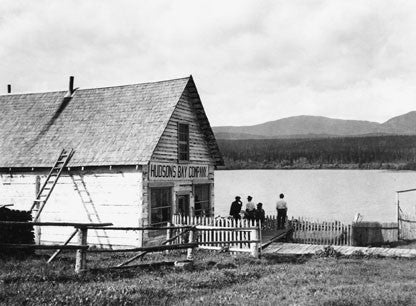Who are the Métis?
Métis culture and nationhood are rooted in intermarriages and other kinship connections between European and First Nations people during the early North American fur trade period. During the 1600s to 1700s, fur traders from France, Scotland, England, and other parts of Europe married First Nations women in what historians have referred to as country marriages, or marriages entered into according to lndigenous law. The children of these couples were mixed Indigenous people, but they were not yet Métis.
Over time, these individuals chose to marry other mixed Indigenous individuals, with such families creating distinct kinship networks, communities, and cultural norms. Gradually, a distinct culture, languages and identity formed over generations which would establish a new Indigenous Nation – the Métis.
In 2002, the Métis National Council General Assembly adopted the following “National Definition” of who a Métis person is:
Over time, these individuals chose to marry other mixed Indigenous individuals, with such families creating distinct kinship networks, communities, and cultural norms. Gradually, a distinct culture, languages and identity formed over generations which would establish a new Indigenous Nation – the Métis.
In 2002, the Métis National Council General Assembly adopted the following “National Definition” of who a Métis person is:
“Métis” means a person who self-identifies as Métis, is distinct from other Aboriginal peoples, is of historic Métis Nation Ancestry and who is accepted by the Métis Nation.
The first Métis people documented in British Columbia (BC) arrived in the late 1700’s, while working as guides for expeditions through BC including the Alexander McKenzie Expedition. Later on, as the Hudson’s Bay Company and the North West Company expanded their presence in BC and opened various fur trading forts across the province more Métis men and their families moved west for employment with the Companies. Over the decades following the decline of the fur trade in the late 1800’s, Métis individuals and families continued to move to BC to escape discrimination and racism experienced across the Western prairies, to be with their families and/or spouses, and to find new employment opportunities. Today, there are over 98,000 self-identified Métis people living in BC.The term Métis does not encompass all individuals with mixed Indigenous and European heritage. Rather, it refers to a distinct people who developed their own worldview, customs, way of life, and recognizable group identity that is separate from their First Nations or European forebears.


Photo Descriptions:
Image: “Fort Babine,” courtesy of the Royal BC Museum (left)
Image: “The Hudson's Bay Company trading post at Fort Babine,” courtesy of the Royal BC Museum (right)
Image: “Fort Babine,” courtesy of the Royal BC Museum (left)
Image: “The Hudson's Bay Company trading post at Fort Babine,” courtesy of the Royal BC Museum (right)